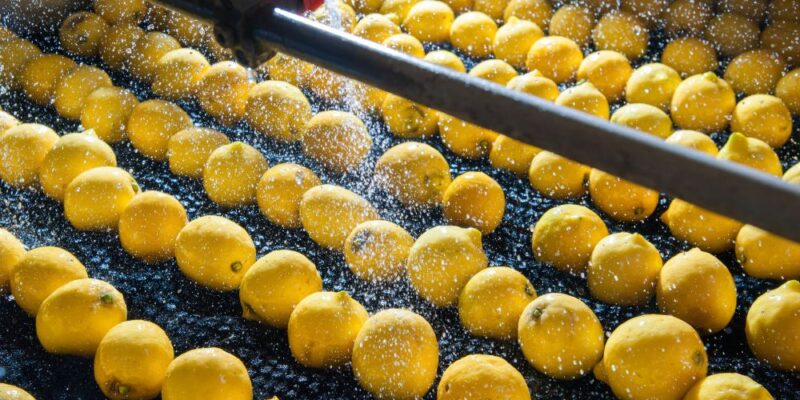In the modern world, the journey from raw ingredients to the delicious meals and snacks we enjoy involves complex processes that demand precision, efficiency, and safety. Among the unsung heroes of this journey is a versatile and remarkable material: silicone. While silicone is often associated with its use in medical and industrial applications, its significance in the food processing industry cannot be overlooked. From baking to food packaging, silicone plays a crucial role in ensuring the quality, safety, and efficiency of the food we consume.
Properties that Make Silicone Stand Out
Silicone, a synthetic polymer made from silicon, oxygen, carbon, and hydrogen, boasts a unique set of properties that make it an ideal choice for various food processing applications. Its most notable attributes include:
- Heat Resistance and Thermal Stability: One of silicone’s standout qualities is its ability to withstand extreme temperatures. This heat resistance is invaluable in applications such as baking, where silicone baking mats and molds can be used at high temperatures without warping or releasing harmful substances.
- Flexibility and Durability: Silicone’s flexibility allows it to be shaped into a wide range of forms, from molds to spatulas. This flexibility, coupled with its durability, ensures that silicone products can withstand repetitive use, reducing the need for frequent replacements.
- Non-reactivity and Food Safety: Unlike some materials, silicone does not react with food or beverages, ensuring that the taste, smell, and quality of the food remain unaffected. Its non-reactive nature also makes it a safe choice for cooking and food storage.
- Waterproof and Anti-adhesive Characteristics: Silicone’s water-resistant properties are advantageous in environments where water or moisture is prevalent. Additionally, its anti-adhesive surface prevents food from sticking, making it easier to clean and maintain.
Silicone Components in Food Processing
Silicone’s versatility is evident in the numerous forms it takes in the food processing industry:
- Silicone O-rings: The flexibility and durability of silicone make it an ideal choice for sealing components in food processing machinery, such as conveyor belts. Its resistance to heat, moisture, and bacteria ensures that machine parts are safe from damage or contamination. Silicone O-rings are also used in cooling systems to seal refrigeration pipes.
- Silicone Packaging: Silicone’s non-reactive and water-resistant properties make it a great choice for food packaging, enabling food producers to store products safely with minimal risk of spoilage or contamination. Additionally, the fact that silicone can be produced cheaply makes it an economical option for large-scale production.
- Silicone Bakeware: Baking requires equipment that can withstand high temperatures and unpleasant environments without warping or releasing harmful chemicals, making silicone the perfect choice for products such as baking mats, molds, spatulas, and brushes. The fact that silicone is lightweight and non-stick ensures efficiency in the kitchen.
Applications of Silicone in Food Processing
The applications of silicone in food processing are diverse and impactful:
- Baking and Confectionery: Silicone baking mats and molds revolutionized baking by providing a non-stick surface and consistent heat distribution. Silicone spatulas and brushes allow for precise decorating and icing.
- Food Packaging: Silicone sealants and gaskets create airtight seals in packaging, preventing contamination and extending the freshness of products. Barrier coatings made from silicone protect food items from external factors like moisture and gases.
- Food Handling and Safety: Silicone gloves and mitts offer heat protection while handling hot pots and pans. Silicone utensils ensure that non-stick cookware remains intact, enhancing the longevity of kitchen tools.
- Beverage Production: Silicone tubing is crucial for transferring liquids between different stages of beverage production. Silicone sealants are used in closure systems to ensure that beverage containers are securely sealed.
- Cooking and Frying: Silicone pot holders and trivets provide heat protection for countertops and tables. Non-stick silicone coatings on pans reduce the need for excess oil and fats during cooking.
Benefits of Using Silicone in Food Processing
The incorporation of silicone into food processing practices brings several benefits:
- Enhanced Efficiency and Productivity: Silicone products are designed to streamline processes, such as baking and food handling, resulting in improved efficiency and reduced cooking times.
- Improved Food Safety and Quality: Silicone’s non-reactive nature ensures that it does not interact with food, preserving the taste and quality of the final product.
- Easy Maintenance and Cleaning: Silicone’s waterproof and anti-adhesive properties simplify cleaning processes, making it a hygienic choice for kitchen tools and equipment.
- Long-Lasting and Reusable Products: Silicone’s durability means that products made from this material have a longer lifespan, reducing the need for frequent replacements.
- Versatile Applications Across Various Stages: From preparation to packaging, silicone’s versatility enables its use in multiple stages of food processing, leading to a comprehensive approach to quality and safety.
Challenges and Considerations
While silicone offers numerous benefits, there are considerations to keep in mind:
- Potential Limitations: Silicone has temperature limits beyond which it can degrade, affecting its performance. A proper understanding of these limitations is crucial for safe and effective use.
- Maintenance and Care: To ensure the longevity of silicone products, proper cleaning, storage, and maintenance practices must be followed.
- Compliance with Regulations: Industries must ensure that the silicone products they use meet food safety regulations and standards.
Innovations and Future Trends
The world of silicone in food processing continues to evolve:
- Integration of Advanced Technologies: Silicone products are incorporating advanced technologies, such as anti-microbial properties, to further enhance food safety.
- Sustainable Alternatives: The development of eco-friendly silicone alternatives addresses concerns related to environmental impact.
Conclusion
Silicone’s remarkable properties and adaptability have earned it a pivotal role in the food processing industry. Its applications in baking, food packaging, cooking, and more have revolutionized processes and enhanced the quality and safety of the food we consume. As technology continues to advance, silicone’s influence on food processing is likely to grow, contributing to the development of more efficient, sustainable, and innovative practices.








Comments